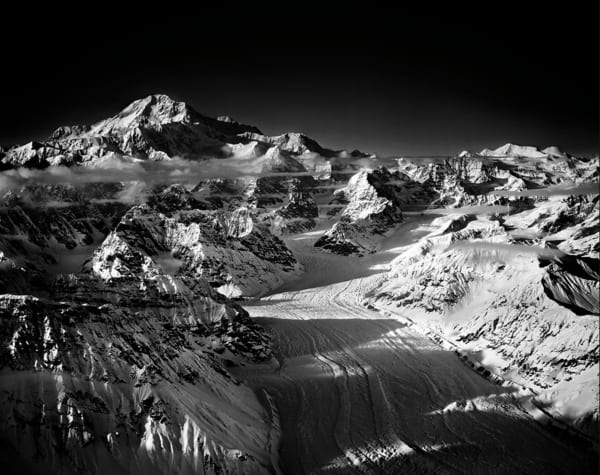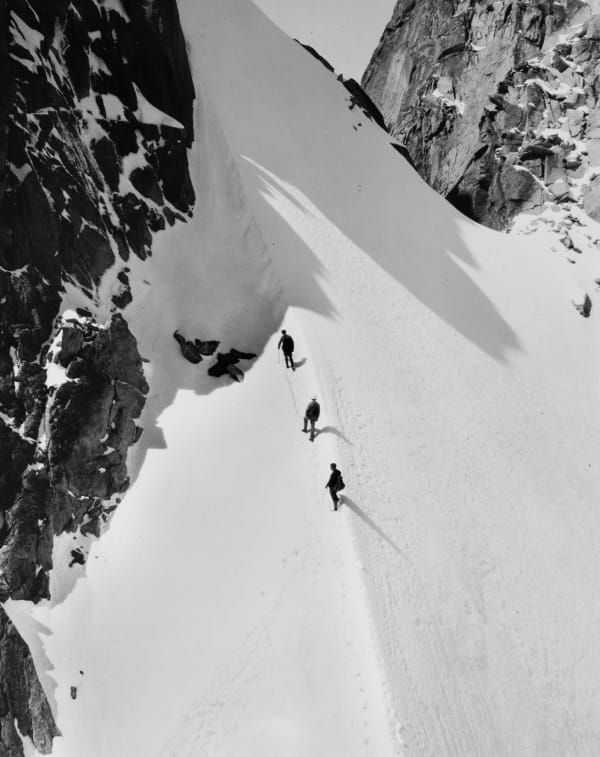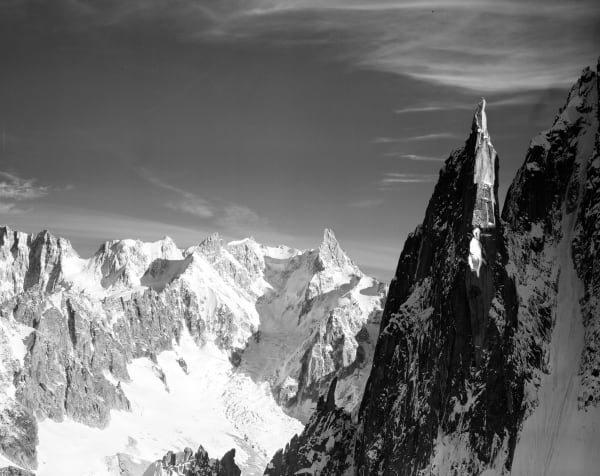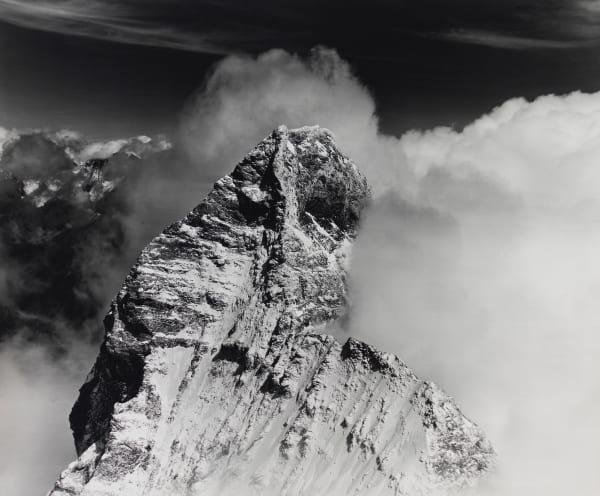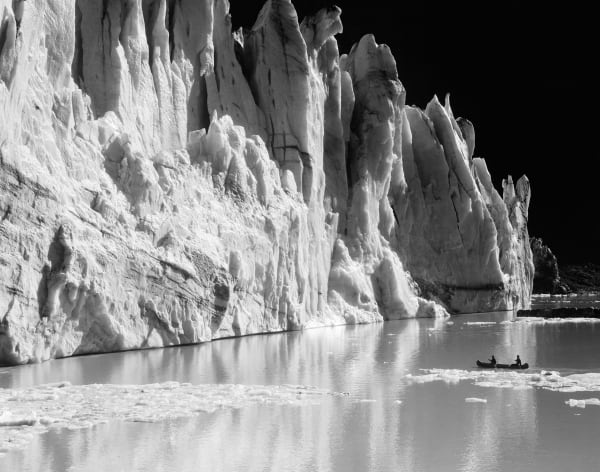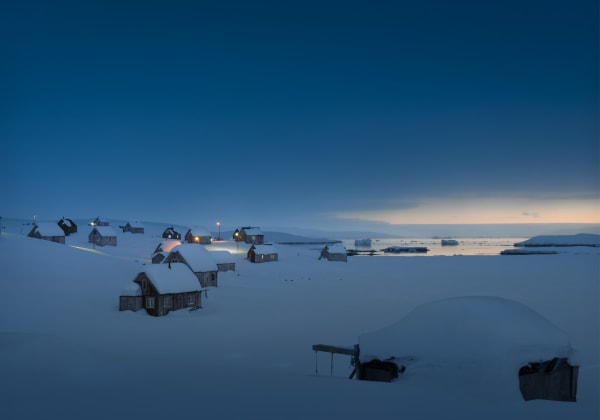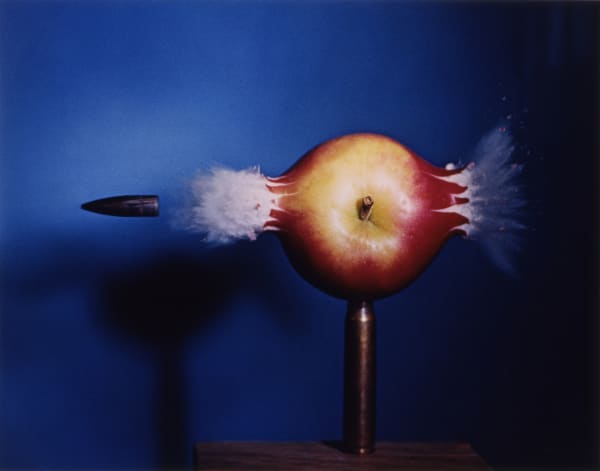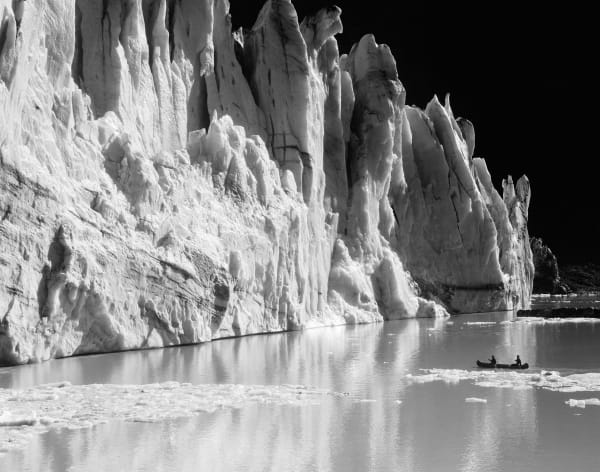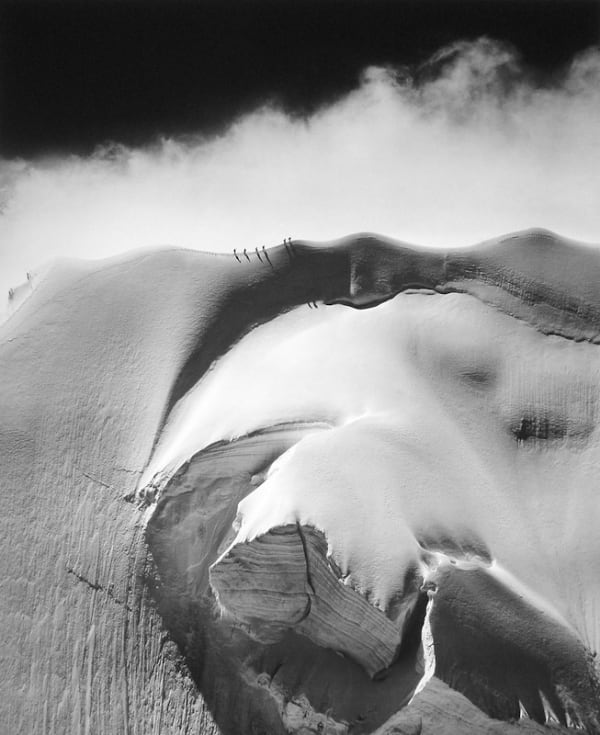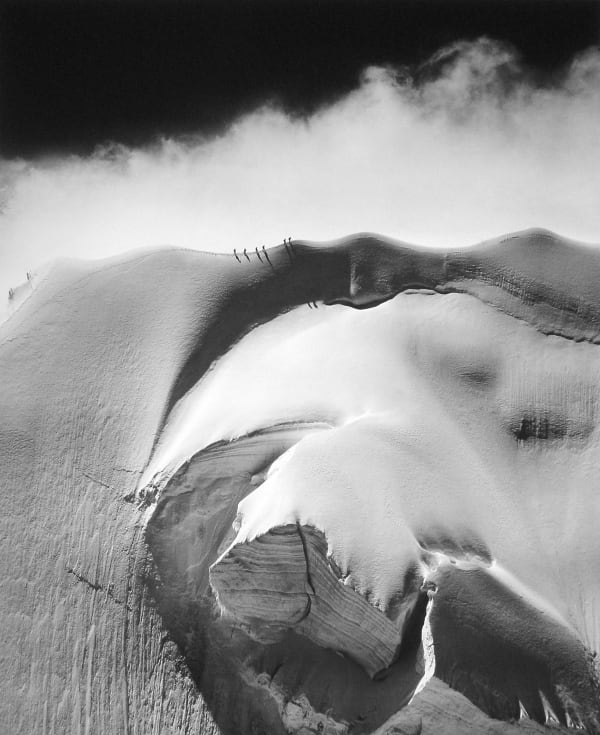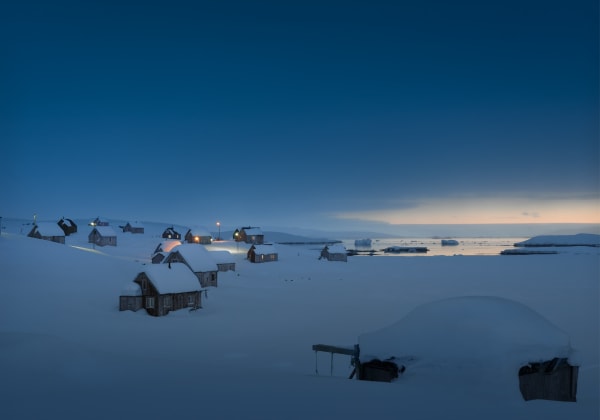Works
-
 Twilight, Tokositna Glacier, Alaska, 1978
Twilight, Tokositna Glacier, Alaska, 1978 -
 After the Storm, Climbers on the Doldenhorn, Switzerland, 1960
After the Storm, Climbers on the Doldenhorn, Switzerland, 1960 -
 Aiguille de Blaitière, Chamonix. Bradford Washburn in ctr. Photo was conceived and composed by Bradford Washburn, 1958
Aiguille de Blaitière, Chamonix. Bradford Washburn in ctr. Photo was conceived and composed by Bradford Washburn, 1958 -
 Aiguille de la République, Chamonix, 1958
Aiguille de la République, Chamonix, 1958 -
 Summit of Matterhorn from Southwest, 1958
Summit of Matterhorn from Southwest, 1958 -
 Mount McKinley Looms Over Wonder Lake, Alaska, 1953
Mount McKinley Looms Over Wonder Lake, Alaska, 1953 -
 Ice Blocks, Mount Silverthorne, Alaska, 1945
Ice Blocks, Mount Silverthorne, Alaska, 1945 -
 Barnard Glacier and Mount Natazhat from the South, Alaska, 1938
Barnard Glacier and Mount Natazhat from the South, Alaska, 1938 -
 South Crillon Glacier and Canoe, Alaska , 1934
South Crillon Glacier and Canoe, Alaska , 1934
Biography
Bradford Washburn was an American, internationally renowned photographer, cartographer, and expert on Alaska's mountains and glaciers. He was Director of Boston's Museum of Science for over forty years and served as Honoury Director until his death in January 2007. A pioneer of arial photography, his images of mountains are majestic, serene and sublime and his photographic work spans over six decades. Working primarily with his Fairchild K-6 large format aerial camera using 8" roll film, the technical and aesthetic quality of his images are exquisite. Washburn concentrated particularly on the mountains of the Yukon region of North America, producing on of his best-known maps of Mount McKinley in 1960.
Washburn was a Fellow of the American Academy of Arts and Sciences, London's Royal Geographical Society and a leading authority on Alaska's mountains and glaciers. In 1988, Washburn and his wife Barbara were honoured with the Centennial Medal of the National Geographic Society. Washburn is responsible for the creation of definitive maps of Mount McKinley, the Grand Canyon, Mount Everest and New Hampshire's Presidential Range. He was a member of the 1992 survey team that made the first laser measurement on top of Mount Everest.
Washburn was a Fellow of the American Academy of Arts and Sciences, London's Royal Geographical Society and a leading authority on Alaska's mountains and glaciers. In 1988, Washburn and his wife Barbara were honoured with the Centennial Medal of the National Geographic Society. Washburn is responsible for the creation of definitive maps of Mount McKinley, the Grand Canyon, Mount Everest and New Hampshire's Presidential Range. He was a member of the 1992 survey team that made the first laser measurement on top of Mount Everest.
Exhibitions
-

Art Genève 2023
Palexpo • Stand B43 26 - 29 Jan 2023Michael Hoppen Gallery is delighted to return to Art Genève this year where we will showcase works by Sarah Moon, Richard Learoyd, Ori Gersht, Fergus Greer, and Tiina Itkonen amongst...Read more -

Masterpiece London 2022
The Royal Hospital Chelsea • Stand 611 30 Jun - 6 Jul 2022We are delighted to be participating in Masterpiece London 2022 and will be presenting a selection of contemporary works, some of which have never been shown before, alongside important historic...Read more -

Art Genève 2022
Palexpo • Stand B47 3 - 6 Mar 2022After a delayed start to the 10th edition of Art Genève, Michael Hoppen Gallery is delighted to present a selection of our represented artists who challenge traditional boundaries and our...Read more -

ART GENÈVE 2020
Palexpo • Stand B49 29 Jan - 2 Feb 2020Michael Hoppen Gallery will be presenting some of our most iconic and important artists for our third engagement at Art Genève . We believe that photography has changed dramatically over...Read more -

ART GENÈVE 2019
Palexpo • BOOTH B39 31 Jan - 3 Feb 2019A preview of what Michael Hoppen Gallery will be taking toArt Geneva, SwitzerlandRead more -

Art Genève 2018
Palexpo • BOOTH D44 1 - 4 Feb 2018A preview of the Michael Hoppen Gallery booth for Art Geneva, 2018Read more -

PAD 2014
Berkeley Square, London 16 - 19 Oct 2014EXHIBITED ARTISTS: BILL BRANDT GUY BOURDIN SCARLETT HOOFT GRAAFLAND ANDRÉ KÉRTÉSZ SARAH MOON SOHEI NISHINO DAVID PARKER ALFRED SEILAND HUNTER THOMPSON TIM WALKER BRADFORD WASHBURNRead more -

Bradford Washburn
5 Dec 2013 - 14 Feb 2014Mountains, adventure, alaska, snow, peaks, USA, America, summit, exploration, aviation, aerialRead more
News
-

WINTER NEWSLETTER 2023
December 15, 2023As the festive season approaches, Michael Hoppen is delighted to announce the opening of its new space at 10 Portland Road, Holland Park. From 6...Read more -

artgenève 2023
Michael Hoppen's Highlights January 23, 2023Michael Hoppen Gallery is delighted to return to Art Genève this year where we will showcase works by Sarah Moon, Richard Learoyd, Ori Gersht, Fergus...Read more -

Winter Newsletter '19
Artist news & a look ahead to next years' programme of art fairs & exhibitionsA look ahead to the 2020 programmeRead more
Enquire
